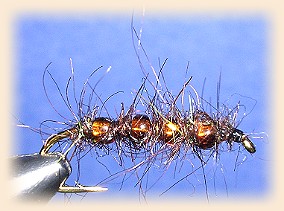Al's 4-Bead Head Nymph
Fly and Photos by Richard Taylor
This pattern is an adaptation from Al Campbell's
Too Simple Fly series, and named in his honor.
I sent about half a dozen nymphs that I tied to my
buddy in New England (Vermont) and told him to try
them, maybe as a dropper, next time he visited his
"hidie-hole" brook trout pond. Received the following
quoted e-mail from him a couple of days later.
"Winter is passing rapidly, been real easy so far,
went fishing with my brother yesterday over on Lake
George. [in NY state] Weather couldn't have been
better, 58 degrees on the ice no wind. Used the
beautiful flies you sent me, they worked great on
perch also. Toward noon the fish stopped biting so
I decided to move out to deeper water, cut a hole
and started catching real nice perch, all of a sudden
I hooked on to a very large something, played tug of
war for about 3 minutes, up close to the hole 6
different times, finally he decided he had enough
of the tugging and he was going to give all he had,
needless to say he broke the line right where I had
tied the dropper fly. I would have liked to have seen
him. . . We think it was a big lake trout. I have never
had that happen before while ice fishing. Was a really
fun day, kept 50 real nice perch, in fact I'm going to
cook some for supper."
Was excited to find out that it catches perch
too as it was tied as a trout fly. Maybe the
Warm Water forum folks can give it a try too.
Can bass, bream, etc. be far behind? Hope so...
Materials Al's 4-Bead Head Nymph:
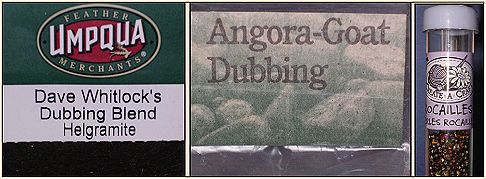
Hook: Size 12-nymph, barbless if desired.
Thread: Black 3/0.
Beads: Glass, Bronze, 30gms.,"Create.A.Craft"
"Rocailles" from the Wal-Mart Arts and Crafts section.
Dubbing: "Orvis Angora-Goat" & "Umpqua-Dave
Whitlock's Dubbing Blend Helgramite"
Prepare dubbing by scissor cutting the long
Angora Goat hair into about half it's normal
length then mix an equal part of it and the
"Helgramite" dubbing. I use a small bowl for
this.
Tying Instructions: Al's 4-Bead Head Nymph
1. Thread four beads onto the hook.
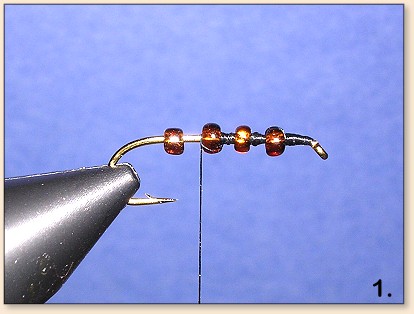
2. Start thread at hook eye and create a small
ball to position first bead a small distance
from hook eye. Make one thread turn over the
bead towards the hook gap and create another
thread ball to create space between the beads.
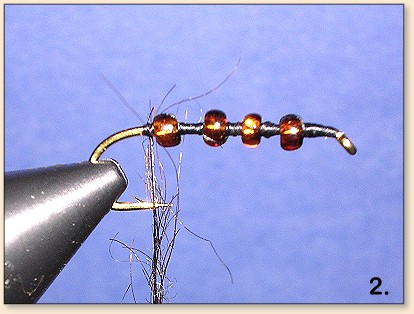
3. Do the same for the two remaining beads ending
about level with the middle of the hook gap with
the thread behind the last bead.
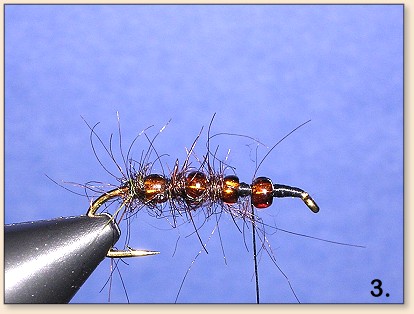
3. Spin the dubbing mix onto the thread and wrap
about three turns behind the last bead. Continue
forward filling the spaces between each bead, three
or more turns depending on the thickness of your
material and/or the depth of the spaces between
the beads.
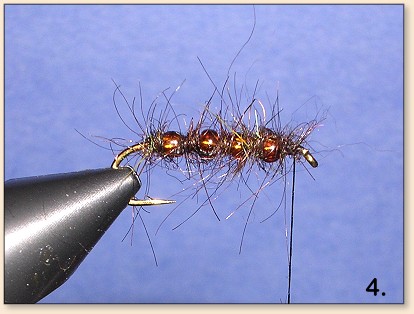
4. Make last two or three turns in front of the first
bead and just behind the hook eye. Finish the head
with about six turns of the thread and tie off.

5. I usually pick out the dubbing for a fuzzier looking
"bug" and sometimes trim it a little.
Variations
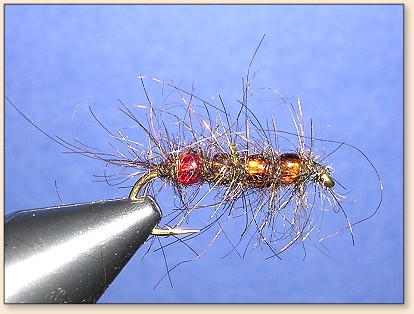
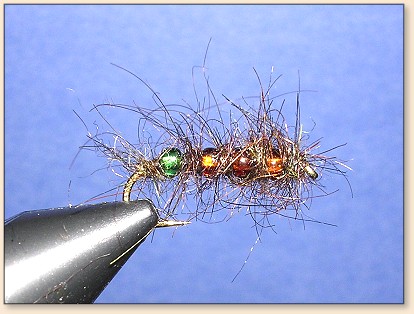
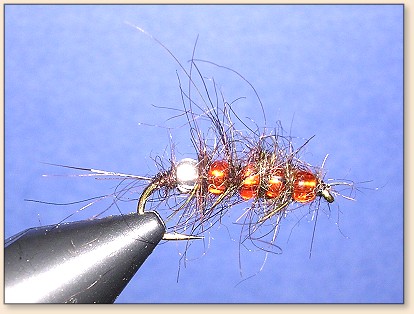
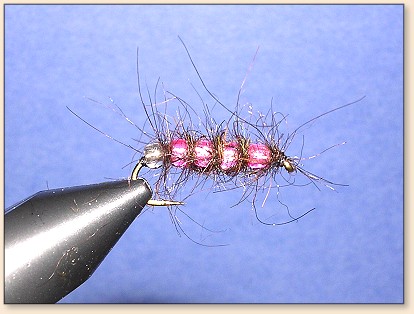
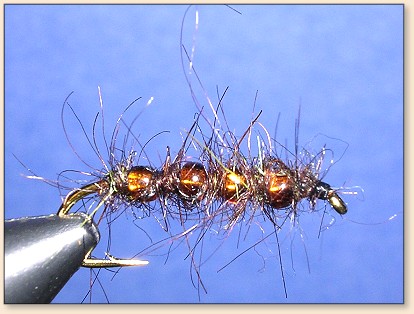
I am starting to use one different colored bead
at the hook gap to see if it makes any difference.
I've used red, green,and clear and will have to
fish them for effectivness.
Tied one with pink beads and one clear one at
the tail. Yet to fish the latest ones. ~ Richard Taylor
|

